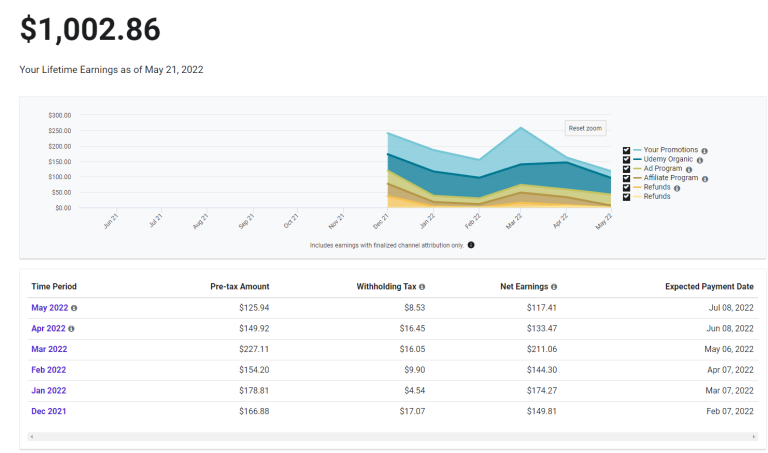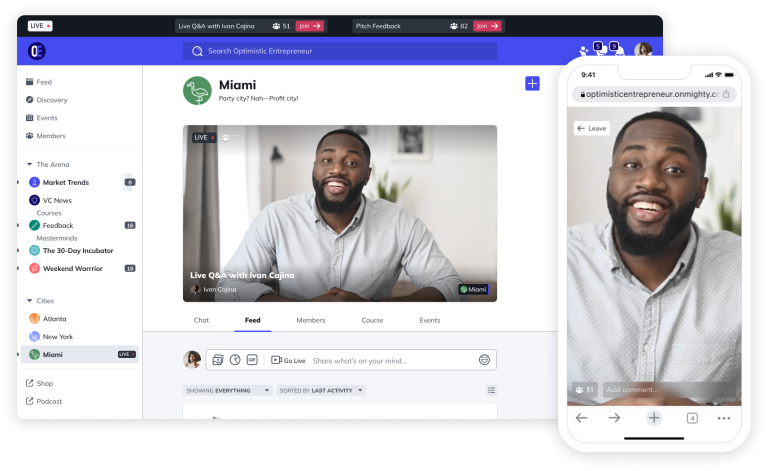Top 5 Pre-Recorded Webinar Platforms

Pre-recorded webinars let you deliver perfect presentations every time while still engaging with your audience in real-time. I’ve set up dozens of webinar systems for clients over the years, and the shift from live to pre-recorded has been a game-changer for most businesses.
The problem with live webinars is they’re stressful, time-consuming, and you’re always limited by scheduling conflicts.
What if I told you there’s a better way?
Pre-recorded webinar platforms combine the polish of recorded content with interactive features that make your audience feel like they’re part of a live event.
These 5 platforms will help you automate your webinar delivery while keeping your audience engaged and converting.
Comparison at a Glance
| Platform | Starting Price | Max Attendees (Entry) | Best Feature | Ideal For |
|---|---|---|---|---|
| eWebinar | $49/month | 100 people | Full automation | Set-it-and-forget-it businesses |
| Livestorm | Free | 30 people | Live + recorded flexibility | Companies wanting both options |
| Demio | $49/month | 50 people | Engagement tools | Interactive educators |
| EasyWebinar | $99/month | 100 people | Sales features | Marketing-focused teams |
| Zoom Webinars | $14.99/month | 100 people | Familiar interface | Existing Zoom users |
Understanding Pre-Recorded Webinars
Okay, now I want to just clarify some things relating to pre-recorded webinars, specifically, how they work and why you’d want to use them.
You record your presentation once and set it up to play automatically for your audience at scheduled times. But here’s the key part: your audience can still interact through chat, polls, and Q&A just like they would in a live webinar.
The benefits are huge. You can deliver the same perfect presentation to audiences around the world without worrying about technical glitches, forgetting key points, or scheduling conflicts. I’ve had clients increase their webinar attendance rates by over 200% simply by offering more time slots with pre-recorded content.
Pre-recorded webinars work best for:
- Educational content and training programs that don’t change frequently
- Product demonstrations where consistency matters
- Onboarding sequences for new customers or members
- Lead generation webinars that need to run automatically
- International audiences across different time zones
The interactive features are what make these different from just uploading a video to YouTube. People can ask questions, participate in polls, and download resources just like they would in a live event.
Step 1: Choose Your Platform Based on Your Main Goal
eWebinar – The Complete Automation Solution
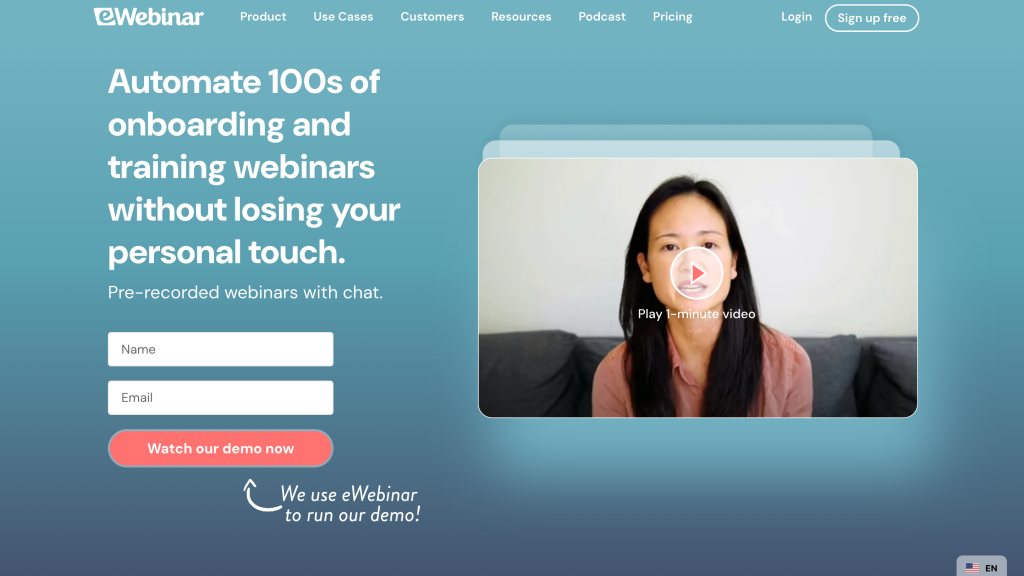
Pricing: Starter $49/month (100 people), Growth $99/month (500 people), Enterprise custom pricing (3,000 people)
eWebinar is built specifically for businesses that want to completely automate their webinar process. I’ve seen this platform used by people who run the same educational webinar multiple times per week and don’t want to be involved in the delivery at all.
What makes eWebinar special is the 12 customizable webinar templates that cover most common use cases. You can set up a professional-looking webinar in about 30 minutes, and the platform handles everything else automatically.
The real-time engagement features include live chat where you can respond personally or set up automated responses, polls that keep people involved, and downloadable resources that get delivered at exactly the right moment.
The analytics are particularly strong as well. You can see exactly when people join, when they leave, which parts of your presentation get the most engagement, and how different time slots perform. This data helps you optimize your content and scheduling for better results.
Choose eWebinar when you want to set up your webinar once and let it run automatically without any ongoing management. It’s perfect for lead generation webinars, product demos, or educational content that doesn’t need frequent updates.
Livestorm – The Flexible Hybrid Solution
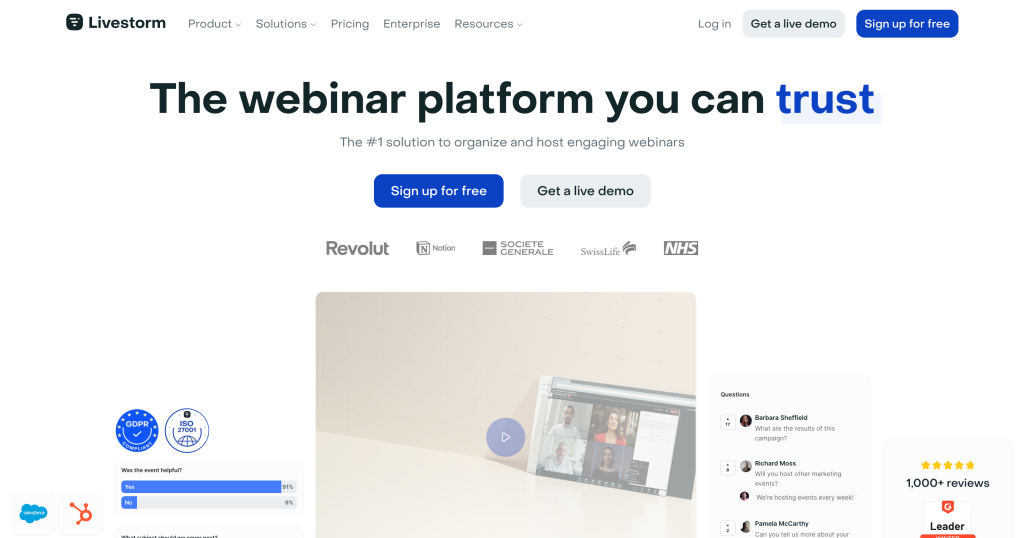
Pricing: Free (30 people), Pro $88/month (500 people), Enterprise custom pricing (3,000 people)
Livestorm’s biggest advantage is flexibility. You can run live webinars when you want personal interaction and switch to pre-recorded when you need consistency or convenience. The platform handles both seamlessly, so your audience gets the same professional experience regardless of format.
The customizable signup pages look professional and integrate well with your existing marketing tools. With over 1,000 app integrations, Livestorm connects to almost every marketing automation platform, CRM system, and analytics tool you might already be using.
What I really like about Livestorm is how it handles the attendee experience. Everything runs in the browser, so people don’t need to download any software or deal with technical setup. The engagement features work smoothly, and the analytics give you detailed insights about attendance patterns and interaction levels.
Choose Livestorm when you want the flexibility to run both live and pre-recorded webinars from the same platform. It’s ideal for businesses that do live product launches or training sessions but also want automated lead generation webinars.
Demio – The Engagement Specialist
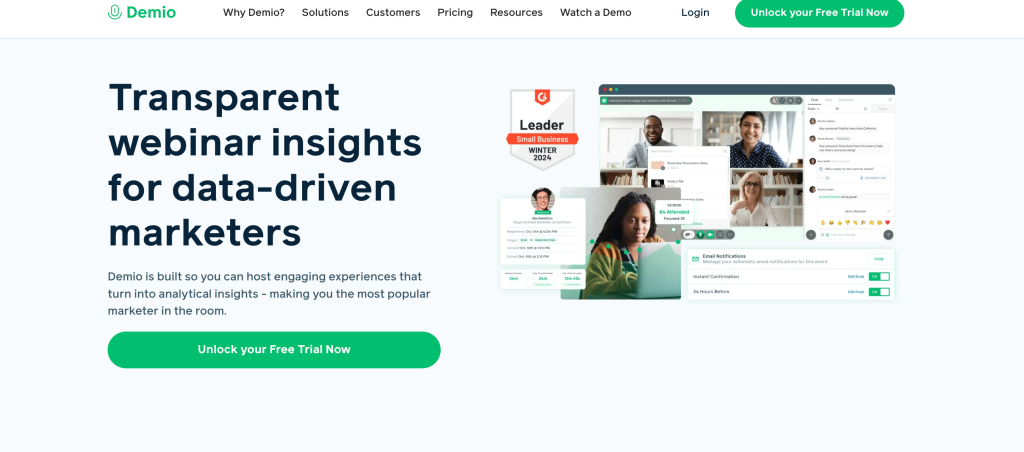
Pricing: Starter $49/month (50 people), Growth $99/month (150 people), Business $234/month (500 people)
Demio focuses heavily on keeping your audience engaged throughout the entire presentation. The unique features like emoji reactions, breakout rooms, and interactive polls work seamlessly with pre-recorded content, making the experience feel more social and interactive.
I’ve seen it used by educational webinars where audience participation is crucial. The breakout room feature is particularly clever because you can set up small group discussions even during pre-recorded presentations. The automatic email reminders and follow-up sequences handle all the communication, so you don’t have to manage that manually.
The browser-based platform eliminates technical barriers that often prevent people from attending webinars. No downloads, no complicated setup, just click and join. The emoji reactions might seem silly, but they actually increase engagement and make people feel more connected to the content.
Choose Demio when audience engagement and interaction are your top priorities. It’s perfect for educational content, training programs, or any situation where you want people to feel actively involved rather than just watching passively.
EasyWebinar – The Sales and Marketing Powerhouse
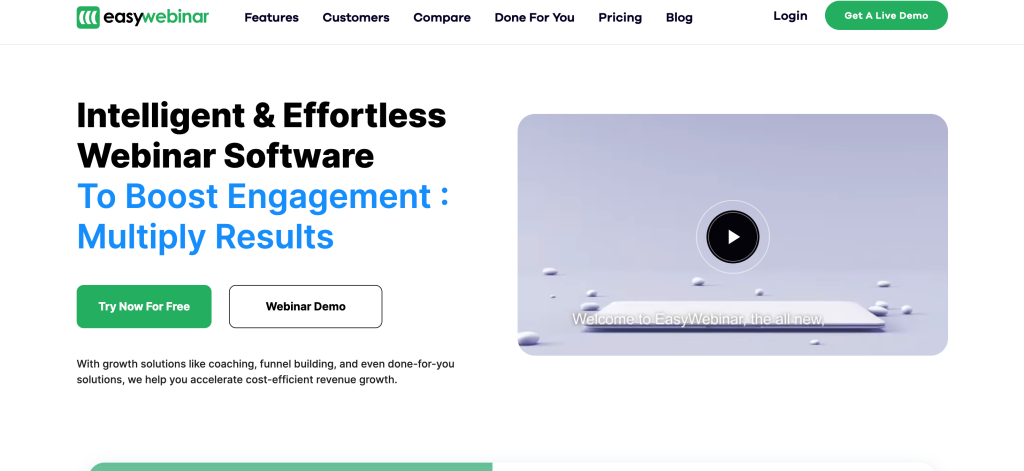
Pricing: Standard $99/month (100 people), Pro $199/month (500 people), Enterprise $499/month (2,000 people)
EasyWebinar is designed specifically for businesses using webinars to generate leads and make sales. The platform includes built-in tools for presenting offers, collecting payments, and managing the entire sales process within the webinar experience.
The branding and customization options are extensive. You can create registration pages, thank you pages, and the webinar interface itself to match your brand perfectly. The automated scheduling means you can set up multiple time slots and let people choose what works best for them.
What sets EasyWebinar apart is how it handles the sales process. You can build offers directly into your webinar timeline, create urgency with countdown timers, and collect payments without redirecting people to other platforms. The integration with Stripe and MailChimp makes it easy to manage payments and follow-up marketing automatically.
Choose EasyWebinar when your primary goal is using webinars to generate leads and make sales. It’s built for marketing teams and sales organizations that need comprehensive tools for the entire conversion process.
Zoom Webinars – The Familiar Choice
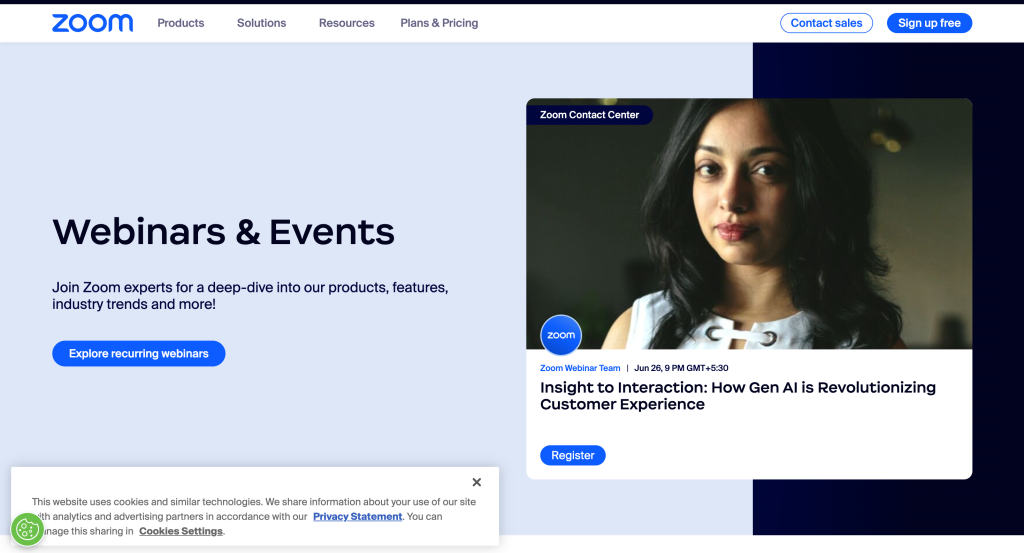
Pricing: Pro $14.99/host/month (100 people), Business $19.99/host/month (300 people), Enterprise $19.99/host/month (1,000 people)
Zoom’s biggest advantage is that most people already know how to use it. The familiar interface reduces technical barriers and no-show rates because people feel comfortable with the platform. The “simulive” feature lets you pre-record your main presentation while staying available for live Q&A and interaction.
The enterprise integrations are particularly strong. If you’re already using Salesforce, Marketo, or other business tools, Zoom Webinars plugs into your existing systems without complicated setup or additional subscriptions.
The pricing is very competitive, especially for larger audiences. While other platforms charge based on features and automation, Zoom focuses on capacity and keeps the per-person costs low as you scale.
Choose Zoom Webinars when your organization already uses Zoom for meetings and you want to extend into webinar automation with minimal learning curve. It’s also good for budget-conscious businesses that need to accommodate large audiences without high per-person costs.
Step 2: Decide What Matters Most
Your choice should depend on what you’re trying to accomplish with your webinars rather than just features or pricing.
If you want complete automation with minimal ongoing management, eWebinar is your best bet. If you need flexibility to run both live and recorded sessions, Livestorm gives you the most options.
For businesses focused on education and engagement, Demio’s interactive features create better learning experiences. Marketing and sales teams will get more value from EasyWebinar’s conversion-focused tools. Organizations already using Zoom can extend their existing setup with Zoom Webinars at a lower cost.
Quick decision framework:
- Set it and forget it → eWebinar
- Need flexibility → Livestorm
- Maximize engagement → Demio
- Focus on sales → EasyWebinar
- Keep it simple → Zoom Webinars
Most platforms offer free trials, so test your top two choices with actual content and audience before making a final decision. The platform that feels most natural for your workflow and delivers the best results for your specific audience is the right choice, regardless of features or pricing.
Any pre-recorded webinar platform starts with good content and clear goals, then letting the automation handle the delivery while you focus on building relationships with the people who engage with your presentations.

